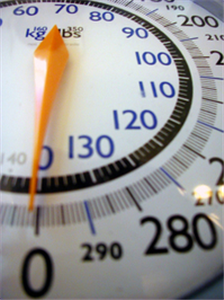How This Helps
When you go barefoot, you need to land on the front of your foot, also known as a forefoot strike. Your heel either lightly touches the ground or avoids it altogether. You run lighter, and your ankle and foot act as shock absorbers, so the rest of your joints do not feel any impact. That’s the magic I was referring to.
Instructions
Joint Integrity
I’m here to tell you right now that it is a false assumption that the joints are more stressed when you run barefoot. In reality, it is the complete opposite. And that’s one of the main reasons I do it.
At least once a week someone walks up to me, looks me in the eye, and says, “You run barefoot?!” It’s almost like they feel sympathetic or something. I respond with, “Yes, I do.” And they always follow it up with, “That must kill your feet and destroy your joints!” I then politely smile, pat them on the shoulder and say, “Thanks for the concern, my friend, but I’m good” and bid them adieu. You see, there is magic in running barefoot. The likes of which you cannot find when you run with shoes on.
To clear the air, you do not land on your heels. This is where most of the concern stems from. That’s called a heel strike and it is mostly done by people who run with conventional shoes or those dreadful thick-soled options that I see far too often these days.
Don’t forget what I said about forcing your feet into uncomfortable places. Due to their thick soles, they give you a false sense of security that you can pound your foot into the ground repeatedly with no repercussions. But THAT is what actually sends thousands of pounds of pressure through your entire kinetic chain. Multiply this times years of running and you have a recipe for a shortened career.
If you do want to suffer joint issues and other repetitive stress injuries in the future, heel striking with these shoes will all but guarantee it. But I’m sure that’s not your goal.
As an added benefit, you need to concentrate a lot more, which changes the game quite a bit. You need to be very aware of the placement of every step you take. If you are ripping down a sidewalk and all of a sudden encounter broken glass or small pebbles, you need to make quick decisions and step strategically to spare your feet from lacerations.
I know that may sound ominous, but you’d be surprised how fast you adapt and develop awareness. This then translates through to your daily life. Anything that has to do with concentration or neurological load becomes easier.







